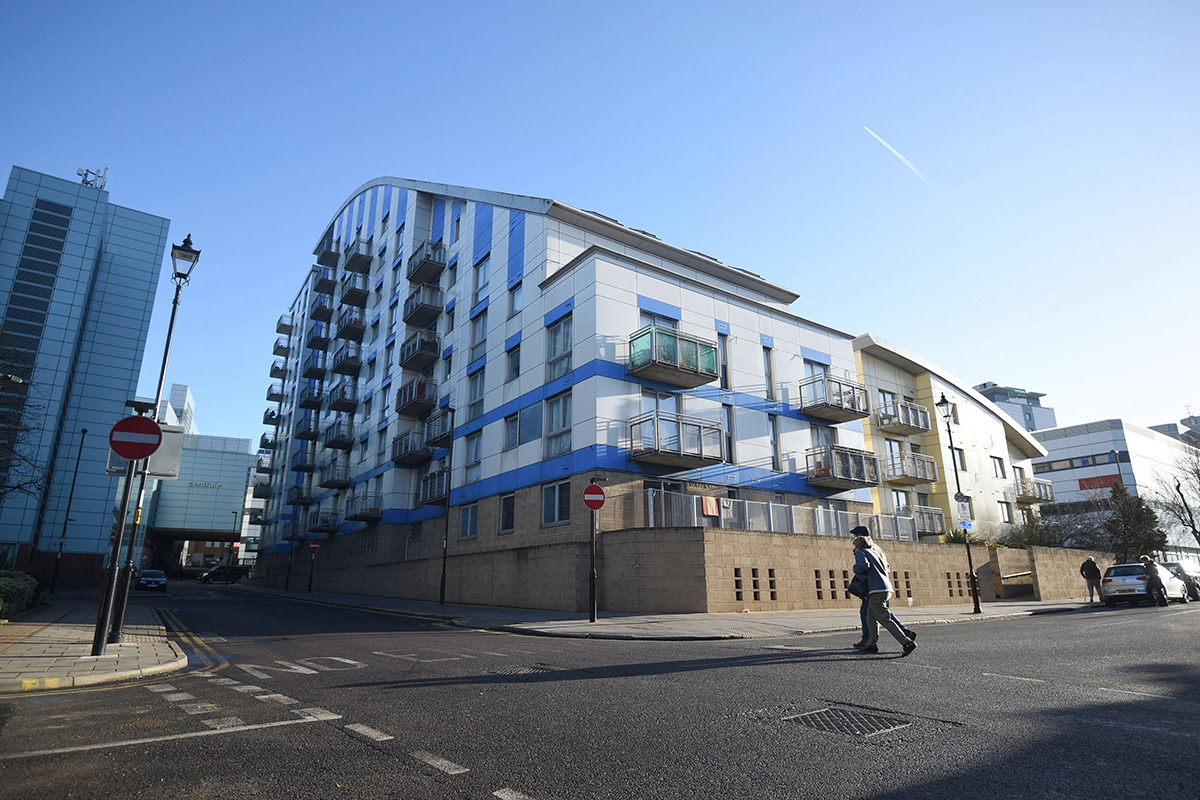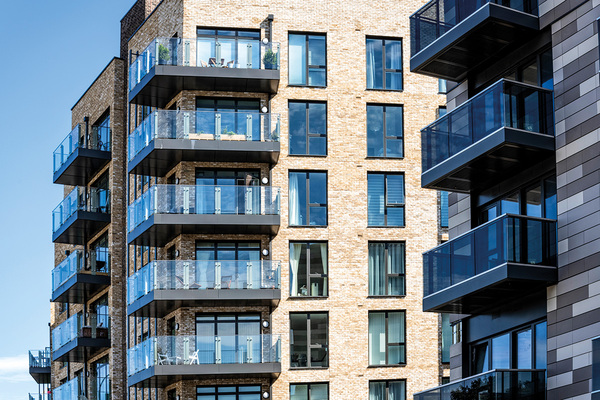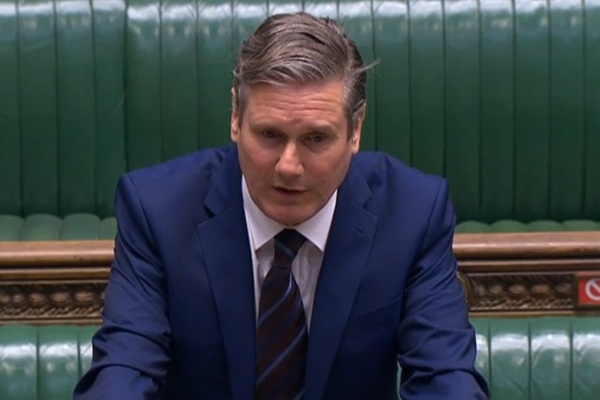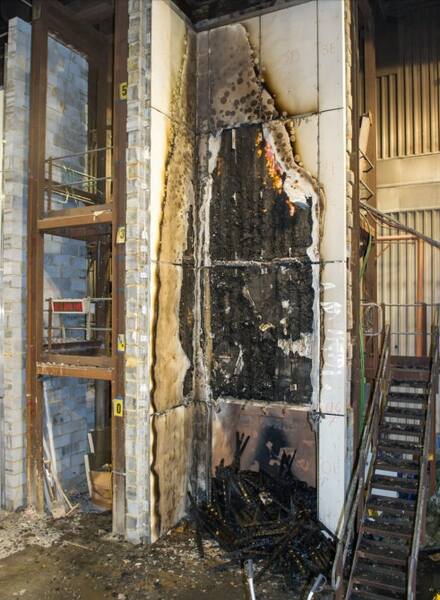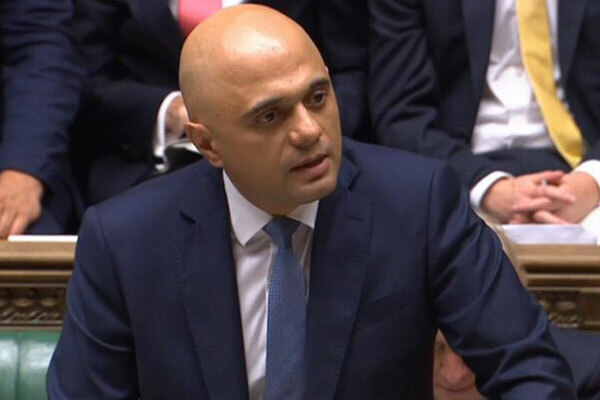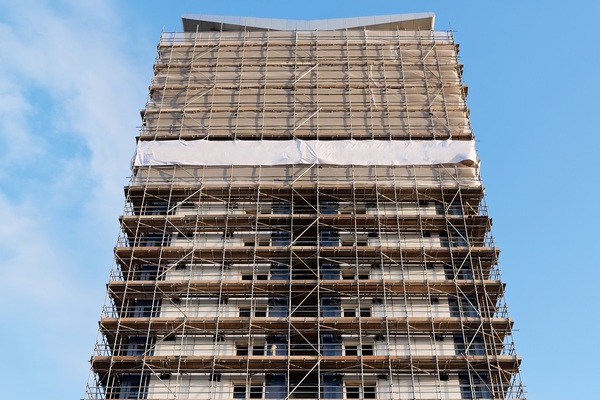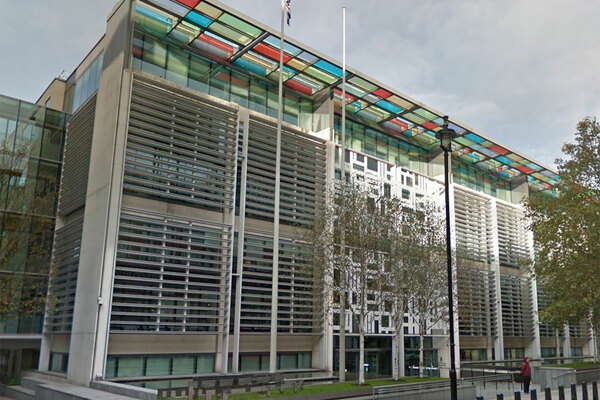How the government has failed to make buildings with dangerous cladding safe three years after Grenfell
How is it the case that almost 2,000 tall buildings and thousands of medium rises all around the country still have dangerous cladding, three years after Grenfell? Peter Apps asks what has gone wrong with the government’s efforts to fix the crisis
If you could have told someone on the day of the Grenfell Tower fire that three years on hundreds of buildings would still have equally dangerous materials on their walls, even the worst cynics would have struggled to believe you.
And yet that is the position we have now reached. According to the latest figures, there are still 246 tall residential buildings with Grenfell-style aluminium composite material (ACM) cladding still on their walls. And this is merely the tip of a very large iceberg which also includes 1,700 towers with dangerous systems of other kinds and potentially tens of thousands of medium-rise buildings.
“Whatever way you cut it, it’s not good enough,” says Nick Coombe, building safety manager at the National Fire Chiefs Council. “I don’t think you can argue, the remediation has been too slow.”
The consequences of this failure have been serious.
First and foremost, it means that three years on from the tragic deaths of 72 people at Grenfell, the country is gambling with the risk of a repeat disaster.
Second, the toll on residents of affected buildings – both financial and mental – has been enormous. Ninety-four per cent now report feelings of anxiety, one in five suicidal thoughts.
Finally, economic damage has also been wrought with the uncertainty over cladding resulting in a virtual freeze in the sale of flats.
As the third anniversary of the fire approaches, Inside Housing has asked multiple sources familiar with the government’s efforts a simple question: what on earth has gone wrong?
Early mistakes
The seeds of failure were sown in the days after Grenfell. On the Saturday, three days after the fire in June 2017, a small, hastily assembled band of experts was called to the Ministry of Housing, Communities and Local Government (MHCLG) headquarters in Marsham Street, London, to plan the response.
A critical error was made at this first meeting: there was a belief among officials that they would be dealing with a small handful of buildings.
“The scale of the issue was not fully appreciated at the outset and that made putting an effective plan in place much more difficult,” says Mr Coombe. “I remember attending the first meeting on the Saturday after Grenfell. There was a feeling there [among officials] that it would be a small number of buildings.”
This mistake mattered because if officials had appreciated the size of the issue and how long it would take to fix, they may have paid more attention to making buildings safe in the interim – instead of relying on the flawed system of waking watch.
It was likely rooted in the fact that the government was adamant that combustible ACM cladding was “banned” by the official guidance. They believed the task would be simply to mop up a few instances of non-compliance.
“What was really clear was the lack of understanding at MHCLG [in the early stages of the programme],” says another source who was involved in the response. “It felt like there was a real dearth of expertise.”
But as the months wore on it became obvious that the guidance on this point was actually far less clear. Builders had used ACM before Grenfell in the belief that it was permitted. It had routinely been signed off by building control officers for decades, and certificates confirmed it as suitable for use on high rises – one even bearing the signature of Sir Ken Knight, a retired firefighter and the newly appointed chair of the government’s expert advisory panel.
Officials ordered building owners to send in samples of suspected ACM for testing. By 28 June, two weeks after Grenfell, all of the 120 samples sent in for testing had failed.
It was evident something had gone drastically wrong and a vast programme of work would be required to put it right.
There were immediately calls for government to take direct control of this process. There would be huge competition for a limited pool of contractors and fire engineers to do the urgent work. Direction was needed to ensure the most at-risk buildings were the first to be fixed.
“I have said from the start that the government should have acted to get the really dangerous stuff off buildings straight away, and then had the argument about who will pay for it later,” says Dr Jonathan Evans, chief executive of cladding supplier Ash & Lacy, who has occasionally advised government.
He says a list of buildings requiring the most urgent work could have been collated, and approved contractors assembled to carry it out. But the government was not interested in taking on this role.
“I just remember the government being uninterested in that [getting involved in the supply chain],” adds another source.
In fact, when a proposal along these lines was floated at an early meeting of the Industry Response Group, a collective panel of industry bodies and government officials, it was abruptly shut down by one representative who is understood to have said: “We do not live in a Marxist country.”
Instead, the work was simply opened up to the market. Building owners bid against each other for the services of contractors. Nothing was done to identify where the highest risk buildings were.
This is important. Not all ACM is the same. Some systems cocoon an entire building in flammable plastic, others are merely a decorative strip around the roof.
“There are only a limited amount of scaffolders, a limited amount of cladding experts. When you just make it a free-for-all market, it’s difficult for the risk, which should have been the priority, to lead the process,” says Mr Coombe.
There were also calls early on to widen the scope of the programme. ACM was the material that was on Grenfell, but there was no reason to believe it was the only threat. Again, the government was not interested.
“I was brought in as the cladding expert and literally, we were sitting around the table and the question went round, ‘OK, what should we be doing?’” says Dr Evans. “I said you have really got to be testing other materials, such as high pressure laminate (HPL) [a form of cladding made from compressed wood fibres], but they basically decided, ‘No, we don’t like the sound of that,’ despite the fact that I was there as the expert in cladding.”
So strongly did Dr Evans feel that this was a mistake that he placed it in writing, emailing officials on 27 July 2017. But nothing was done.
He adds: “It was driven by wishful thinking that ACM was the only material that had slipped under the radar. They didn’t want to open the can of worms of other materials in case they needed funding. I think the building regulation teams didn’t want to be seen to have had a complete failure.”
Another source adds: “It felt like MHCLG were trying to get ahead of the criticism and the media cycles [which were focused at that stage on ACM].
“There was never a stage when I felt like MHCLG in general or any particular team stepped back and thought, ‘Right, if we put tomorrow’s headlines out of our mind for one second, what is the right way to approach this and what should we focus on?’”
A government spokesperson insists that its focus on ACM was based on the view from its independent expert panel that it was “the most combustible and the highest risk [material used on buildings]”. The spokesperson adds that it has “never been complacent on this” and issued advice regarding other materials.
However, in summer 2017, a series of large-scale tests were commissioned to ascertain the danger of real-world cladding systems. But with the focus squarely on ACM, no other cladding materials were tested.
The resulting programme identified four common ACM systems which failed and three which passed. The precise system used on Grenfell failed spectacularly, with a 9m rig devoured by flames in under seven minutes.
The risk was now plain to anyone: the Grenfell fire was not an anomaly. These cladding materials were deadly, and they were installed on hundreds of buildings around the country.
If the need for a state-led and state-funded remediation programme was not obvious before, it was now. But still the government declined to take control.
There was an apparent reluctance to intervene too directly. Guidance was issued stating that fire safety was the responsibility of the building owner and that they should “seek professional advice” if they had a dangerous system. Dr Evans has previously told a select committee government officials initially did not want to order the removal of combustible insulation because “it will give Rockwool [a major manufacturer of non-combustible insulation] a monopoly on the market”.
“They absolutely saw this as industry’s problem to solve,” he adds. “The view was we’ve done the testing, we’ve done everything we need to do, over to you – that was their attitude. They just didn’t want to get involved, they didn’t want to have an executive responsibility.”
The programme was already in trouble. But a bigger problem was looming.
‘Do the right thing’
Until this point, the focus had mainly been on the social housing sector. Here, the issue is easier to solve. The building owner (a social landlord) should have the resource and skill to manage a major project like cladding removal and replacement.
But in September 2017, Sajid Javid (pictured), then communities secretary, revealed that 85 of 89 cladding samples from privately owned buildings had also failed. This was going to be a far more difficult problem to solve. The question was: who was going to pay for this work?
Private tower blocks in the UK are often owned by shell investment companies which exist to do little more than collect the ground rent.
Day-to-day maintenance is then contracted to a management company, while the individual flats are sold on long leases to the residents. The terms of these leases allow the freeholder to pass on maintenance costs to them.
There was an obvious problem with this. While fire safety laws made building owners responsible for making the buildings safe, leasehold law meant residents would have to pay for it.
“The big mistake that [the government] made early on was to believe that what they insisted on calling the ‘building owner’ would pay. They were absolutely convinced that was going to work,” says Martin Boyd, chair of the Leasehold Knowledge Partnership, which advises leaseholders. “We went to see the building safety team in November 2017 and said, ‘Not a cat in hell’s chance.’”
This warning went unheeded. Instead, the government simply adopted a mantra which would become wearily familiar as the months went by. On 4 December 2017, Mr Javid called on building owners to “do the right thing” and not to pass costs on to leaseholders. But this came with no legal force.
Unsurprisingly, it was ignored. Building owners sent invoices to residents for the removal work – running to six-figure sums. The residents, outraged, called in lawyers and the first cases were listed for tribunal in early 2018.
“They believed that it would all be sorted by allowing matters to go to the courts,” Mr Boyd says. “But that was just never going to happen. At one point I put several leading lawyers in front of them for a private meeting, and the civil servants asked the lawyers, ‘Is there any chance the leaseholders could win?’ To which the lawyers all answered ‘no’.”
So it proved. The first case was the Citiscape building in Croydon, where the leaseholders lost a tribunal in March 2018 and were told they were liable to pay £2m to replace the cladding. Other tribunals confirmed this position. Unfair as it may seem, it was the law.
The government now effectively had two options: it could pay for the work itself or it could pass tough primary legislation forcing developers or freeholders to act.
It did neither.
Under pressure from survivors over the slow pace of remediation work, Theresa May announced that £400m was to be top sliced from the Affordable Homes Programme and redirected towards cladding remediation in the social housing sector. But nothing was put up for private blocks.
A source involved in advising ministers during this time says this was political. It felt paying private companies for cladding removal would look weak.
“The government felt it couldn’t be seen to be funding the work and letting developers and freeholders off the hook. So that [not funding private blocks] was a political decision,” the source says.
Instead, behind the scenes, ministers began begging, cajoling and threatening freeholders and developers to pay for the works themselves. But without legal force, this process faltered.
“They had data sheets – this is how many developers we’ve talked to, this is how many we’ve agreed with. They were able to track progress,” says one source involved in the work. “But what they never did is said if we don’t get past a certain threshold, it’s failed and we need another approach. What they kept saying month in, month out is we’re getting nearer the end here.”
For some blocks, developers paid up, possibly motivated by the fear of bad publicity. In a few more, warranty providers agreed to pay. This process has so far resulted in just over half of the identified private blocks getting funding in place.
But at the remaining 94, developers and freeholders simply dug their heels in. And the government had no Plan B.
“All the time I was saying, ‘We’ve dealt with the very easy ones, we’ve dealt with the easy ones, what are we going to do about the rest?’ They never gave Plan B any consideration,” says a source.
Nothing ruled out
As officials privately contacted building owners begging them to pay for the work, publicly ministers talked tough. They repeated the mantra that they were “ruling nothing out” if action was not taken. But as the months wore on, this threat sounded increasingly hollow.
In December 2018, the government tried to act. New enforcement measures were introduced which gave local authorities powers to push building owners to remediate, by classifying cladding as a hazard.
But this failed. First, it relied on enforcement by overstretched and under-resourced local authority inspectors. More importantly, it contained no mechanism to stop costs being passed to leaseholders. So if a freeholder was enforced against it would make final payment demands from residents, bankrupting them. Councils could not pursue this enforcement route until alternative funding was in place.
Another option was to “name and shame” those responsible – a move which was long threatened and belatedly taken in February of this year for a handful who had not even started working on a plan for ACM cladding removal.
But the companies named, such as RMB 102 and STG Management (London), underscore why this has not worked as a disincentive. Naming and shaming is no threat to a company with no major trading reputation.
Indeed, our legal system protects developers because the Defective Premises Act places a six-year limit on the time to bring a claim. Many fire safety issues have been discovered well after this point, so there is no route residents can take to hold the developer to account. With the government relentlessly pursuing building owners, they have been largely let off.
“The people who have made the money were the developers, not the people who own them now,” says one housing association chief executive. “I think developer liability is an important principle here because of the risk and rewards principle. They have taken the profits and made money.”
One option that may have worked is the solution which has been developed in Victoria, Australia. Faced with a similar crisis, the state has legislated to introduce a levy on developers. A small percentage of build costs are paid into an overall pot which funds cladding remediation.
“We tried to push to them very early on that ultimately you can only fix this problem with primary legislation,” says Mr Boyd. “The only simple way out of it is if we make this a complete no-fault system and set up a pot of money to fix this problem. The trouble with that is it needs a big-picture view.”
Instead, no legislation has been forthcoming to force action.
“I remember [then housing secretary James Brokenshire] saying at a meeting that they were completely hamstrung by the lack of any legislation to force people to change the cladding. But why there was no appetite to drive new legislation through is really beyond me,” says Dr Evans.
A letter from Melanie Dawes, then the most senior civil servant at MHCLG, in May 2019, sheds some light on why. Legislation was simply seen as too radical.
“You [Mr Brokenshire] have also considered more interventionist approaches, such as legislating to protect existing leaseholders, or compulsory purchase of the relevant buildings,” she wrote. “These raise very significant concerns in relation to property rights; are not necessarily any lower cost for the Exchequer; and do not lend themselves to a fast solution.”
Asked about this a government spokesperson says it will not hesitate to name other building owners and that it “reserves the right to bring forward necessary enforcement”. The fact is though, that three years on from Grenfell, it has not.
So, in early 2019, with legislation ruled out and the enforcement route it had attempted proving ineffective, the government was left with little choice. Either it could pay for the work, or the leaseholders would. At first, it dug its heels in.
By early 2019, leaseholders were running out of patience. Various campaign groups formed – primarily the UK Cladding Action Group and the Manchester Cladiators. Together with Inside Housing, they launched the End Our Cladding Scandal campaign, calling for government funding as the only viable route to fixing the problem.
Initially, these claims were rebuffed – with ministers repeating the mantra that building owners should “do the right thing” and insisting that nothing was ruled out if they did not.
But pressure built. A mental health survey showed the shocking impact the crisis was having on leaseholders and MPs warned ministers they would have “blood on their hands” if there was a repeat of Grenfell.
Faced with a deluge of negative publicity, the government had little choice. A £200m fund was announced by Mr Brokenshire (pictured) to cover the remaining private buildings with ACM. Demonstrating the power of the campaign, it was announced on the same day that the campaign sent an open letter calling for its establishment, signed by cross-party MPs and public figures.
Why did it take so long? Multiple sources have told Inside Housing that MHCLG had realised it would have no option but to spend the money much earlier, but the expenditure was blocked by an internal Whitehall struggle with the Treasury, which only relented when the pressure became too much to resist.
“The reason everything was slow and partial and grudging was the Treasury,” one insider tells Inside Housing. “Getting the money for social housing cladding removal took months. We finally got that and then it took another year to get a grudging partial acknowledgement that we were going to have to pay for the private stuff as well.”
While the release of the money was a step forward, a year on progress with this fund has been stilted and slow. The rules were extremely tight: to apply, building owners were required to gather ‘state aid’ forms from every leaseholder in the block. The work essentially had to be paid for in advance before being recouped in stages from the fund.
This was too much for the small, shell companies which owned buildings and their agents which were really set up to cope with managing cleaning and basic concierge services. Progress stalled. To date, just nine of the 94 buildings have had the funding approved. The others are at various stages in what has proved to be a long, arduous process. Cladding is still on the walls.
But this was not the only problem with the fund. It also drew attention to one of the early mistakes the programme had made: the decision to focus exclusively on ACM and buildings above 18m.
The non-ACM problem
By May 2019, when the private sector fund was announced, it was clear that the building safety crisis stretched well beyond ACM.
Leaseholders up and down the country were being hit with bills ranging from the removal of timber cladding to the replacement of defective fire breaks. So the announcement of a £200m fund solely for ACM was not met with celebration but condemnation of the “cladding lottery” it created.
The government was increasingly aware of this issue – and afraid of it. They fretted that leaseholders in non-ACM buildings might launch a legal challenge.
“Senior officials bricked themselves when Brokenshire announced this fund because he did it without knowing how he would defend them from open-ended claims for other forms of cladding,” says a source.
Some of this fear was made evident when the fund was released. Ms Dawes at MHCLG took the highly unusual step of requiring a public written direction from ministers as she believed the fund went against public spending rules. This made it clear there would be no repeat or extension.
But pressure mounted, particularly through the evidence of other fires.
In June 2019, just days before the second anniversary of Grenfell, Samuel Garside House in Barking was almost destroyed by a blaze which ripped violently through its timber cladding.
This underscored the deficiency in the government’s response: it was not ACM and it was below 18m but there was no question that it was extremely dangerous.
The problem of buildings below 18m is simply seen as too big.
Leaked documents obtained by Inside Housing show officials believe there are an estimated 100,000 buildings between 11m and 18m around the country.
The guidance never made them subject to any restriction on the type of materials which could be used for cladding, meaning there are thought to be a vast number of problem buildings.
One senior chartered surveyor, who has advised government, said: “Because of the building regulations, we've got buildings below 18m where there had been no real guidance around this at all issued by government.
“And so we've had thousands of buildings built now, particularly the four and five-storey buildings in the past decade or so, with trendy cladding stuck on the outside of it which we are now finding out are problematic.”
But cleaning up this mess, and the mess of non-ACM cladding, was something the government did not want to become responsible for.
Instead, it tried to fix the problem in the lightest touch way possible – by issuing an advice note telling building owners to fix it themselves.
This would prove to have disastrous consequences for flat owners, the housing market and the economy.
Advice Note 14
Picture: Getty
From as early as December 2018, the government was increasingly aware that there was a serious risk from non-ACM products. It had seen private testing showing an HPL cladding system seriously failing a large-scale test.
In response to these concerns, it published a document called Advice Note 14.
This advised building owners that all combustible materials should be removed from buildings unless their safety could be proved through a large-scale test.
While this may seem sensible, it is simply not what official guidance had said for 30 years.
This requires a little understanding of how building regulations work in this country. All builders are legally obliged to ensure the walls of buildings “adequately resist the spread of flame”. But the regulations do not tell them how to achieve this. Instead, the government publishes official guidance setting out more granular rules.
In the years before Grenfell, this guidance – Approved Document B – permitted the use of combustible materials on tall buildings in various ways.
For example, combustible materials with a ‘Class 0’ rating have long been permitted on tall buildings; so have combustibles on balconies and around windows. Moreover, light tough regulation and some poor industry practice has also resulted in many systems which simply break the rules. (A government spokesperson says: “The legal requirement in the building regulations is clear that the external wall should adequately resist the spread of fire and the guidance is clear that this is a fundamental requirement.")
“Suddenly [ministers] realised that this was a huge issue and we’ve been steadily building buildings which are unsafe,” says one senior fire expert. “As a country, we were not focused on fire safety, prior to Grenfell at all. The fire safety statistics in terms of fatalities and injuries were steadily coming down year on year. So if somebody like me turned up and said to a minister, ‘You need to do something about your building regulations and making buildings fire safe,’ they wouldn’t even entertain you.
“We were much more focused on the energy performance of buildings – putting combustible insulation on the outside, trying to reduce the energy consumption. Fire safety just got brushed under the carpet.”
Advice Note 14 was effectively ordering building owners to clean up this enormous mess with no funding, no oversight and no prioritisation of the work. The result was chaos.
By summer 2019, private flat owners were routinely being denied mortgages for what were previously believed to be perfectly safe buildings. Their homes were given a value of £0 and they were unable to sell.
Couldn't this have been foreseen? Sources say the government was more focused on fire safety than the wider implications of what it was doing
“We did say to them, ‘Why don’t you come and talk to us before you publish this?’ Because I don’t think they really realised the unintended consequences of what was just published,” says a senior industry source.
“I’m not saying they don’t understand some of this, but I think some of those unintended consequences don’t necessarily end up top of their list.”
By autumn, this situation was a full-blown mortgage crisis, with an estimated 600,000 flats effectively unsellable. Leaseholders across the country were trapped and a huge number of property transactions were put on hold or scrapped.
“Advice Note 14 has destroyed the secondary market for high-rise buildings. It will take probably 10 years to be able certify all our stock to the standard they want,” one housing association chief executive says.
What was required was knowledge: which systems were truly deadly and which were a minor risk so that work could be done on some and others could be left in place. But as 2019 wore on, this was not provided.
Testing of non-ACM systems had first been promised in September 2017, but by summer 2019 it had not yet been carried out. There were difficulties sourcing materials, finding a testing facility and even a broken testing rig slowed the programme.
By this point, there was substantial concern about three types of cladding and insulation in particular: HPL, expanded polystyrene and timber.
In July 2019, the government released the result of a test it had commissioned on an HPL system. But the system tested used far less combustible HPL and cladding than that found on most real-world buildings.
Dr Evans accused the government of a “desperation to contain the cladding scandal”. “Somebody at MHCLG needs to show some leadership, put their hands up and do an open and honest appraisal of commonly found combinations because this situation is not going to go away. It’s going to get worse before it gets better,” he told Inside Housing.
As for polystyrene and timber systems, they were simply not tested. Leaked minutes from a meeting between MHCLG officials and London boroughs, obtained by Inside Housing, show officials refused the direct request of London boroughs to test polystyrene.
So ministers were persisting in saying that ACM was uniquely dangerous, and refusing to fund the removal of other forms of cladding, but simultaneously declining to test the systems that might have disproved this.
The danger of this approach was underscored in 2019 by a series of fires in buildings clad with non-ACM materials – culminating in a huge HPL fire at The Cube in Bolton in November 2019.
Ministers were at least trying to count non-ACM buildings. In summer 2019, local authorities were given a share of £4m of funding and ordered to identify the external wall materials on all tall buildings in their areas.
But this funding was paltry compared to the size of the task. No reliable data exists for many buildings and the funding was not enough to cover actual inspections. Councils resorted to simply emailing building owners and asking them what was on their walls.
“The collection of data on buildings has been haphazard and this data is an important part of future building safety,” says Mr Coombe.
“Local authorities have been provided with some funding to support the data collection, but we still believe that resourcing the task is an issue and this has led to a range of different ways that data has been collected. Some have made returns informed by physically walking the streets, while others used Google or wrote to building owners.”
Without this data, work to remove cladding from these buildings has barely started.
Small steps forward
As 2019 closed, the situation was dire. Nothing was known about the risk from non-ACM buildings, many of which were unidentified and unprotected. Residents faced huge costs and a mounting mental health crisis. The sales market for flats was virtually frozen.
But after the election in December 2019 there have been steps forward – some more successful than others.
First, negotiations between industry stakeholders resulted in attempts to unstick the sales market frozen by Advice Note 14 by giving surveyors the power to declare buildings safe without a test – an approach known as an EWS form.
This was the right idea, but so far this has not worked. Surveyors’ insurers will not give them cover to sign buildings off, knowing the huge liability they would face if there was a fire. Sales of tens of thousands of flats are still effectively halted.
In fact, this problem has got worse. In January, the government toughened its advice notes – calling for the removal of dangerous materials from buildings below 18m as well. Now flats were caught by the freeze on sales regardless of height.
“This brings thousands of additional buildings into scope and has had the effect of lenders becoming extremely cautious about lending on any property that has any cladding or balconies of any type,” a senior Royal Institution of Chartered Surveyors source said in an email seen by Inside Housing. “This is a very complex and far-reaching problem, that only government can solve ultimately.”
It has not done so yet.
In a bid to move things forward, it has also set up a ‘protection board’ with £10m of funding to help assess the risk to individual buildings and some construction experts to help building owners get moving with the work.
A far more significant move came in a surprise announcement at the Budget in March. With pressure from campaigners building, and protests filling the lawns outside parliament just a week before, new chancellor Rishi Sunak U-turned on the government’s previous refusal to fund the removal of non-ACM cladding and unveiled a new £1bn Building Safety Fund, almost doubling the previous commitments.
There are serious limitations: there is an estimated £3.5bn of work to do but only £1bn of funding. The money will be allocated on a ‘first come, first served’ basis, meaning many high-risk buildings may miss out. Non-cladding issues such as missing fire breaks are excluded. Grilled about this in May, ministers were once more reduced to appealing to building owners to “do the right thing”.
But in agreeing to pay for at least some of the country’s non-ACM cladding costs, the government has crossed a major Rubicon, which may ultimately result in the kind of fund which would make a real difference.
Despite this progress, three years on from Grenfell, it is reasonable to ask: how much longer will this go on?
“It might take 10 or 15 years to get the dangerous buildings fixed at current pace,” says Dr Evans. “I think the chances of there not being another serious fire in the next 10 to 15 years are significantly less.
“Will it take a politician’s daughter to be stuck in a tower block to say, ‘We’ve had enough of this, we can’t accept this.’ Because that’s what they don’t seem to realise: it could be a relative or a loved one in a student accommodation block or a hotel somewhere. This could happen to anybody.”
MHCLG statement
A spokesperson for MHCLG said: “We do not recognise the claims in this report. The safety of residents has always been our top priority and since the Grenfell Tower fire we have worked tirelessly with councils to identify buildings at risk and ensure they are made safe. We have brought forward new measures to hold those responsible to account and all the action we have taken has been based on advice from our independent panel of experts.
“We are providing £1.6bn for the remediation of unsafe cladding from high-rise buildings and are bringing forward the biggest legislative changes in a generation to provide further enforcement powers against those who do not comply with the law and ensure that residents’ safety is at the heart of the construction process.
“Building owners have a legal responsibility to keep their residents safe and while we have seen positive action from some, there is still far more that others must do to protect their tenants.”
UPDATE 12.06.2020 3.26pm
This feature was updated to add two extra sentences of response from MHCLG
